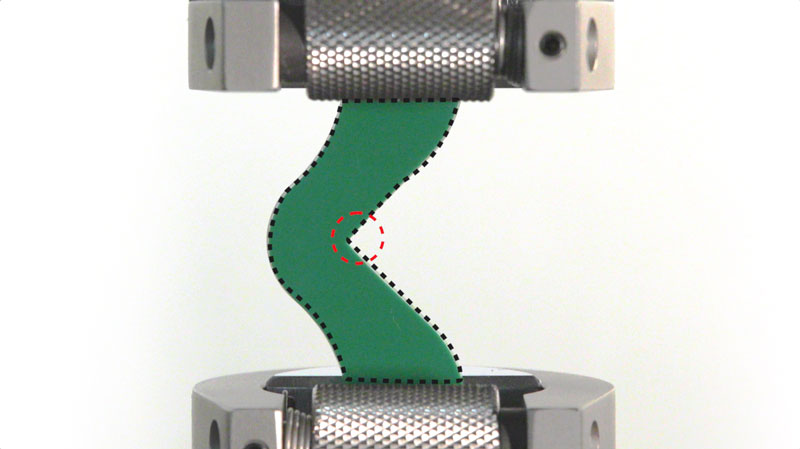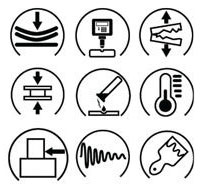
Polyurethane’s Tear Strength
A material’s ability to resist the initiation and growth of a tear
Why It Matters
Polyurethane’s tear strength is an important property to consider for applications that involve abrasive or destructive environments. It is especially important if the polyurethane will be in tension and there is a potential for cuts or nicks.
Urethane’s tear strength is dependent on a combination of basic properties such as modulus and tensile strength, which result from the polyurethane’s formulation. We can tailor the polyurethane’s tear strength to fit your specific need.

Play Video
Measurement
Urethane’s tear strength is typically measured in pounds per linear inch (or kN/m) of specimen thickness.
We select the best test method based on the nature of the intended application. Even then, a correlation between test results and service performance is often quite difficult to establish. So these types of tests are more useful for material comparisons than for predicting performance in an application.
There are several widely accepted ASTM tests for measuring the polyurethane’s tear strength. Each test uses a tensile testing machine to strain the test specimen at a constant rate until the specimen completely ruptures.
- ASTM D-624, Type C — Standard Test Method for Tear Strength of Vulcanized Rubber and Thermoplastic Elastomers — sometimes referred to as the Die C test. This test measures resistance to tear initiation.
- ASTM D-1938 — Standard Test Method forTear-Propagation Resistance of Plastic Film and Thin Sheeting by a Single-Tear Method — sometimes referred to as the Trouser Tear test. This test measures resistance to cut or tear growth.
- ASTM D-470 — Standard Test Methods for Crosslinked Insulations and Jackets for Wire and Cable — sometimes referred to as the Split Tear test. This test measures resistance to cut or tear growth.
Typical Values
Higher tear strength is normally achieved with polyester type polyurethanes.
ASTM D-624, Type C tear strength for polyurethane can be as high as 1,000 pounds per linear inch (175.1 kN/m). Tear strengths using this method generally increase as polyurethane’s tensile strength increases because this test depends largely on tensile factors.
ASTM D-470 tear strength for polyurethane can approach 250 pounds per linear inch (43.8 kN/m).




